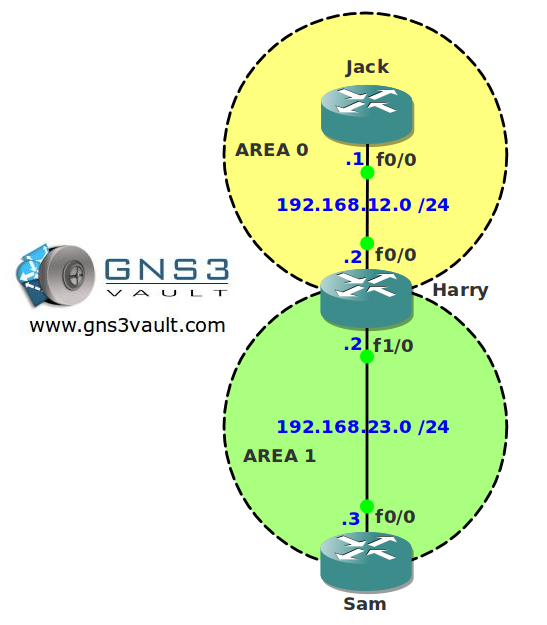Scenario:
As the junior network engineer for a large cartoon network you are asked to look at the OSPF configuration of the network. Some external networks are redistributed into OSPF and your boss asks you if you can summarize them so the routing table stays small. Your colleague tried some summary commands but couldn’t get it working…see if you can fix it!
Goal:
- All IP addresses have been preconfigured for you.
- Configure OSPF on all routers. Advertise all physical interfaces.
- Router Sam has a number of loopback interfaces. Redistribute them in OSPF so they show up as external routes on router Jack.
- Configure OSPF so there are two summaries for the loopback interfaces of router Sam. Use the most optimal summaries.
It took me 1000s of hours reading books and doing labs, making mistakes over and over again until I mastered all the protocols for CCNP.
Would you like to be a master of networking too? In a short time without having to read 900 page books or google the answers to your questions and browsing through forums?
I collected all my knowledge and created a single ebook for you that has everything you need to know to become a master of CCNP.
You will learn all the secrets about OSPF, metrics, authentication, area types and more.
Does this sound interesting to you? Take a look here and let me show you how to Master CCNP ROUTE!
IOS:
c3640-jk9s-mz.124-16.bin
Topology:

Video Solution:
Configuration Files
You need to register to download the GNS3 topology file. (Registration is free!)Once you are logged in you will find the configuration files right here.

The How to Master series helps you to understand complex topics like spanning-tree, VLANs, trunks, OSPF, EIGRP, BGP and more.
Written by René Molenaar - CCIE #41726


Thanks Rene.
really u are excellent instructor
Hey Rene got a quick question for you. In regards to this summarized and the Type 3 tutorial you use two different methods to advertise the summarized subnet. I know there are instances where there are multiple ways to accomplish the same goal. Could I use the summarize method from the type 5 tutorial for type 3. Let me know if needs more specifics.
Need specifics. For LSA5 summarization you’d generally use summary-address versus area X range.
Hi, (This is my first post on gns3vault)
Firstly great work Rene, your Labs are great!!!! Learning lots..Much appreciated!
One of the objectives are to set up two optimal summaries on router SAM (as follows).
summary-address 172.16.0.0 255.255.252.0
summary-address 172.16.4.0 255.255.252.0
Aside of the objective is there any reason(s) the below summary won’t work? (Best practice? etc)
summary-address 172.16.0.0 255.255.248.0
Thanks for your help in advance 😉
Nicholas,
Thanks for your response. Just wanted to confirm the methods to summarize routes for LSA 5 (summary-adress) differ from LSA 3(area).
Hi Guys,
I tried it myself to use the area range command instead of summary-address command to see if it works, but area range command didn’t work.
Can someone please explain, why it didn’t work? is it because we redistributed it into OSPF?
Thanks
Yes. Area range applies to LSA3 only while summary-address applies to LSA5/7. You can only go summarization at ABRs and ASBRs (of note, you can summarize LSA7s on an ABR if it’s the 7to5 translator).
hi Rene.
In your ccnp book you say:
So far so good? Excellent! One more thing we can do with OSPF and summarization which is
external route summarization. This is where we summarize the type 5 external LSAs.
You can create the summary on the ABR or ASBR.
A null0 entry will be created in the routing table for the summary route.
But from Cisco are saying that i can do it only on the ASBR.
http://www.cisco.com/c/en/us/support/docs/ip/open-shortest-path-first-ospf/7039-1.html
I have tried it on the ABR and no luck. Why is that?
George